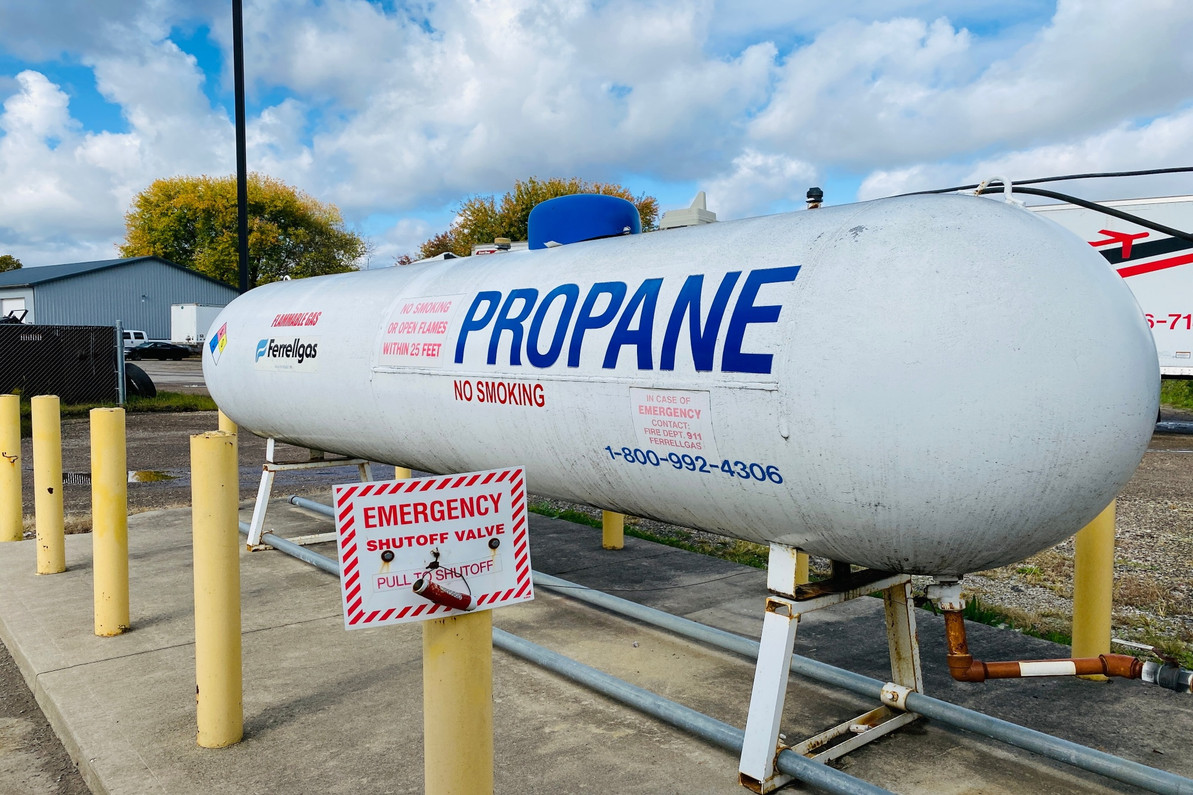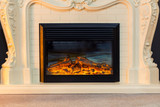Propane Uses, Safety, and Storage: A Handy Guide for RVers
Traveling around the country in an RV requires increased fuel and energy management awareness. As an RV owner, you are responsible for calculating energy consumption because you will not always have access to a permanent source and thus run the risk of running out during your trips. In a previous blog post, we discussed the basics of RV electrical systems as a power source. In this article, we will discuss another power source that RVs utilize while on the road: propane. You will often hear the propane system in your RV referred to as the "LP system".
Propane 101
Propane is an alternative fuel obtained as a byproduct of petroleum refining and natural gas processing. You may also hear propane called “LPG” or “Liquified Petroleum Gas”. Propane is nontoxic, colorless, and naturally odorless, though an identifying odor is added as a step of production so that it may be detected in case of a leak.
Propane Storage Container Sizing
You may be aware that propane is stored in tanks and cylinders, but did you know that there are 48 standardized sizes of propane storage containers that vary from 1lb to 2000 gallons. It is more common to measure capacity in gallons, though you will also find that propane is measured in pounds.
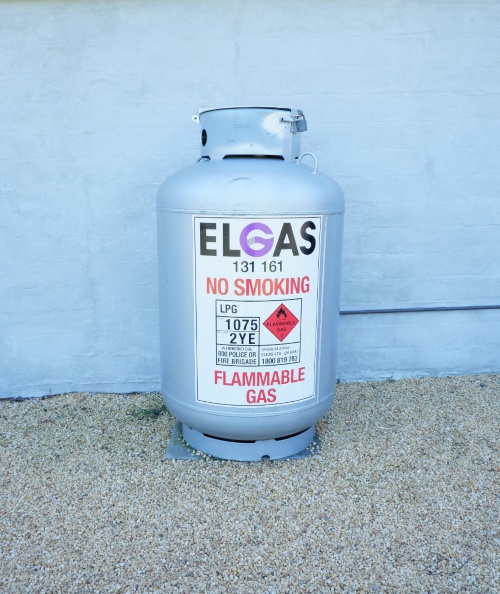
The designation between “tank” and “cylinder” has to do with the storage container size and whether it is meant to be installed horizontally or vertically. Propane tanks are larger and installed horizontally. Propane cylinders are smaller and are installed or used in the vertical position. Tanks are more common for permanent use, and cylinders are used for all types of work and recreational equipment since they may be portable.

Most motorized RVs utilize an onboard, permanently mounted propane tank to power certain indoor appliances. An external propane setup is the most common for travel trailers and fifth wheels.
Regardless of tank size or unit of measurement, it is recommended to only fill up propane tanks to 80% of maximum capacity. This is because propane will expand in heat and could explode if there is no room allowed for expansion. Temperature affects the weight and volume of the gas when compressed in a tank.
Common Uses
Propane is versatile for a wide variety of applications in both residential and commercial use. RVers should be incredibly familiar with propane as many RVs utilize LPG as a primary energy source for powering appliances and generators, especially when access to electricity is limited.
Propane Safety Tips
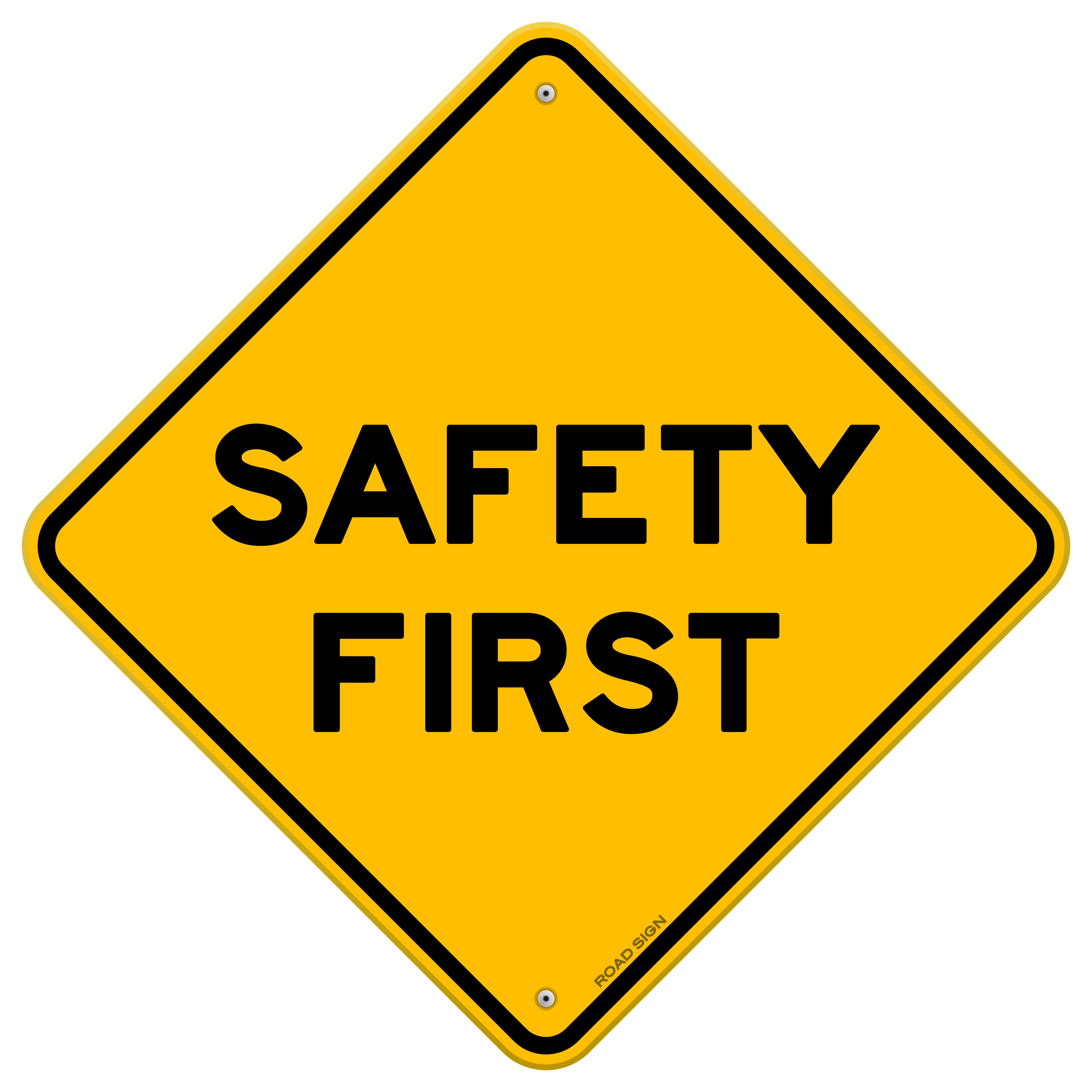
Propane inside of a tank is stored in a highly compressed, liquid state. The high-pressure state of propane cylinders can be dangerous if not handled properly. Propane cylinders must be properly filled, maintained, and stored to prevent accidents. Keep reading for some safety tips!
Storage
- Your propane tank should not be stored in or subjected to temperatures greater than 120°F
- Avoid storing tank in direct sunlight
- Never keep your propane cylinder inside of your home or vehicle
- Always store your propane cylinder in the upright position
- Ensure that the regulator valve is in the OFF position during storage
- Keep your tank away from flammable or combustible materials
Transporting Cylinders
- Propane cylinders should always be transported in an upright, vertical position and adequately secured
- Carry no more than four propane cylinders in a sedan or SUV at any given time; the total combined weight of cylinders should not exceed 90 lbs when traveling in an enclosed, personal vehicle
- Securing the container to a truck bed or trailer is the best way to transport propane. If that is unavailable, wedging the cylinder between the front and rear seat or storing the cylinder in a milk crate in the trunk are other options. Propane should always be secured to avoid shifting or tipping during travel.
Recognizing & Addressing Leaks
- Rotten smell - A chemical compound called methanethiol is used as an additive for propane gas because it gives it a distinct rotten egg smell which is easier to detect. If you are in your camper and think you smell a propane leak, turn off appliances and tanks, then exit your rig. Call a professional to investigate the leak further and make repairs as necessary.
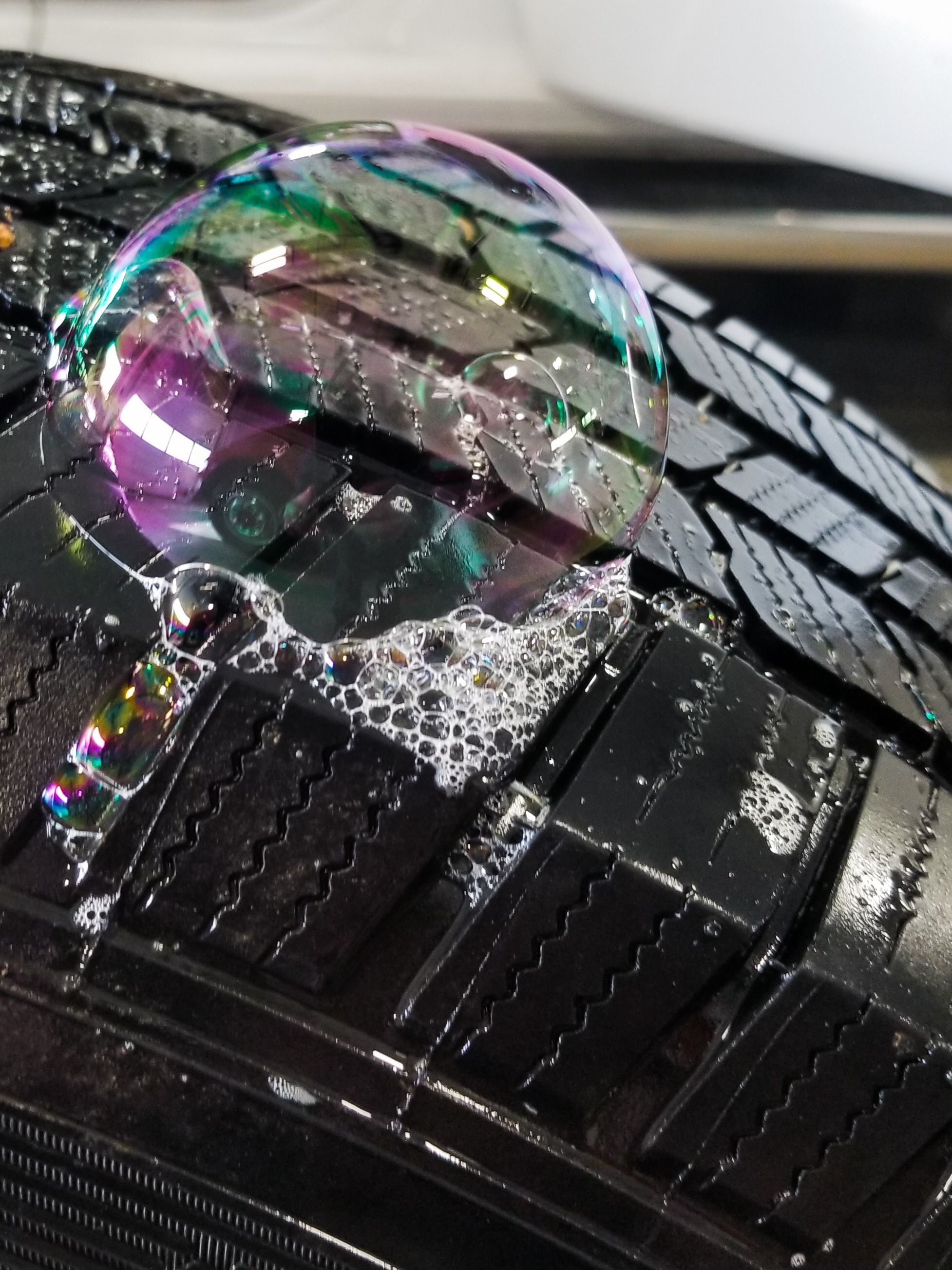
- Soapy water - Regularly inspect your propane tanks and accessories. Keep an eye out for rust and dirt buildup or anything that looks like it could compromise the integrity of your LP system. If you suspect a possible leak, turn off your propane system and use the dish soap method to check for escaping air. To do this, simply mix dish soap and a small amount of water in a spray bottle and apply to any spots you are concerned may be leaking. If the soap mixture bubbles, you can be sure there is a leak. If the soap doesn’t bubble, but you are still worried that a leak may be present, call in a professional to be sure.
- Gas detector - Install a propane gas detector as an additional safety measure to identify leaks.
- Call a professional - If you are unsure about anything with your LP system, it is always better to bring a professional than to try and figure it out on your own.
Propane Cylinder Components & Accessories
To safely utilize propane-powered appliances, it is crucial to have an idea of what each component does and when certain accessories are required.
Regulator
The regulator is one of the most important pieces of a propane gas system. Its job is to control the flow of gas to appliances and lower the pressure of the propane leaving the cylinder. All propane-powered devices will require a regulator, but the specific type of regulator to use depends on the setup and BTU requirements.
Pressure Relief Valve
A pressure relief valve, sometimes called a safety valve, pop-off valve, or pressure-venting valve, is required by law for all propane storage containers. This valve is designed to prevent your tank or cylinder from rupturing in case of excessive pressure buildup. The pressure relief valve is kept closed by a strong spring that will open if the tank pressure is greater than that of the valve spring.
Overfill Protection Device (OPD)
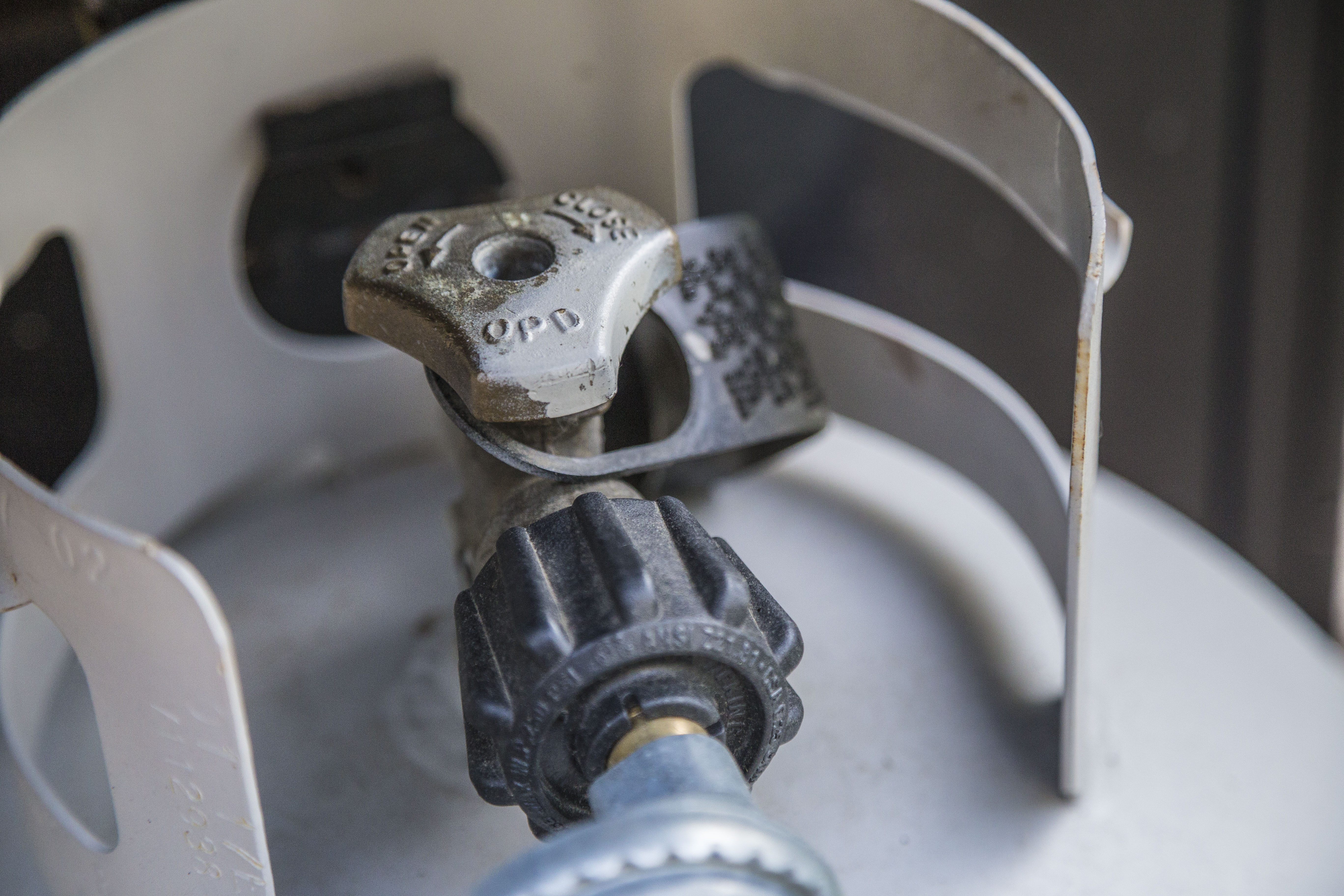
The overfill protection device operates similarly to a float valve in a toilet. As the cylinder is filled with liquid propane, the float is pushed upward until it closes off the flow, letting the bottle filler know that the cylinder is full. An OPD valve is designed to control only the flow of liquid propane into the tank when filling; it does not stop the gas flow out of a cylinder.
space
Propane Tank Connection Valves
Two types of valve fittings are typically found in RV propane cylinders - POL and Acme. POL fittings are a bit of an old technology and are less common in newer systems. POL valves are internally threaded and require a wrench to tighten the valve. Acme valves are externally threaded and can be tightened by hand. Unlike POL valves which require a plug when not being used, acme valves are designed with a built-in safety mechanism that holds propane in when not in use.
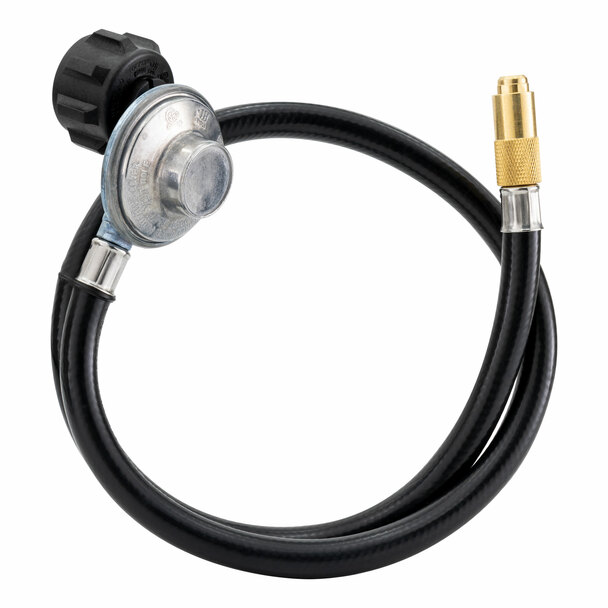
Propane Hose
An approved hose must be used to connect the regulator to an appliance in your propane system. You will notice that propane hoses come in different configurations depending on the fitting type and regulator/appliance connections. Propane and natural gas hoses are not interchangeable without a conversion kit, so make sure you are purchasing and using the correct hose type.
Propane Gauge
Propane gauges can give an approximate measure of how much propane is left in your tank or cylinder. Propane gauges cannot provide an exact measurement because of the phase changes that can occur when propane is stored in an airtight container. As you fill an empty tank with propane gas, the internal pressure increases until the propane begins to condense and transform into a liquid. As you add propane to the tank once condensation has started, the pressure will remain mostly the same while the amount of liquid propane at the bottom increases. Then as you use your propane, it will transform back into a gas as pressure is reduced.
Propane gauges can still provide helpful information, but you must understand what the reading is actually able to measure.
Propane Gas Detector
Propane is a combustible gas, meaning the fumes can burn in the air or the presence of oxygen. Because of this, a propane leak can be catastrophic if not attended to in time. Propane has an additive that smells like rotten eggs so that it can be more easily detected by humans, though relying on this alone to detect a propane leak can be risky.
Gas leak detectors are designed to identify leaks and react by displaying a value reading or warning light and sounding an alarm if the leak is not addressed. Gas detectors will specify the types of gas it is designed to detect, like propane or radon. A carbon monoxide detector will not be able to detect a propane leak and vice versa. Depending on the potential hazards, it is imperative to have the correct types of gas detectors in your home or RV. Combination detectors are available, but again, the specific gas leaks that can be detected will be clearly identified on the packaging.
Recent Posts
-
4 Tips for Securing RV Furniture While Traveling | RecPro
How To Secure RV Furniture There are few things that beat going out on an adventure with an RV …Apr 11th 2024 -
Can You Put Regular Furniture in an RV?
Can you put regular furniture in an RV? Many new and old RV owners ask themselves this qu …Apr 8th 2024 -
Are RV Electric Fireplaces Safe
Being Safe in Your RV with an Electric Fireplace Safety is always going to be one of your highest …Apr 4th 2024 -
How To Install An RV Fireplace
A Warm Addition to Your On-Wheels: The DIY RV Fireplace Installation Guide Many RV enthusiasts ask …Apr 1st 2024 -
Essential Grilling Gear Every RVer Needs
Whether or not you consider yourself a pitmaster or grillmaster, if you’re out on the road with y …Mar 18th 2024 -
Fun and Interesting Places to Visit That Aren’t a National Park
One of the big destinations when RVing is to go to National Parks. You want to get back to nature, h …Mar 4th 2024

